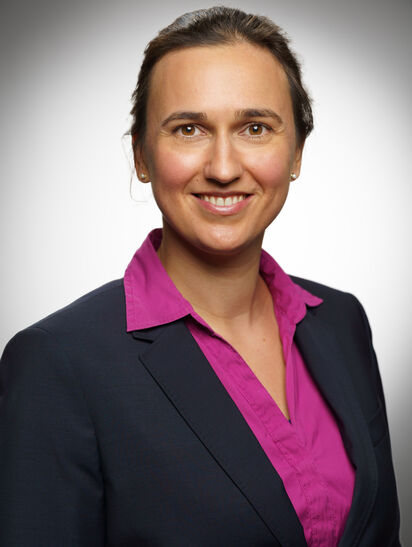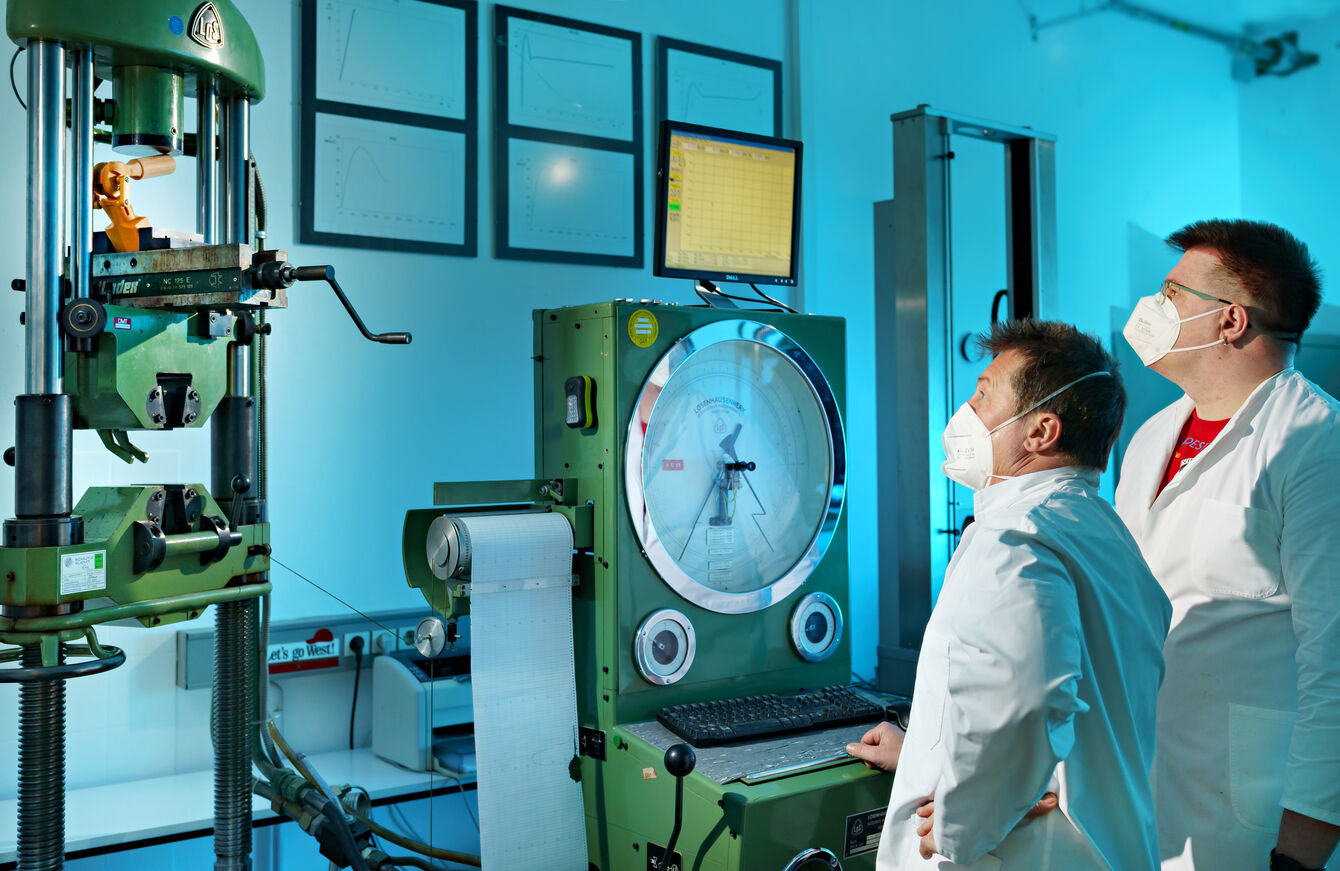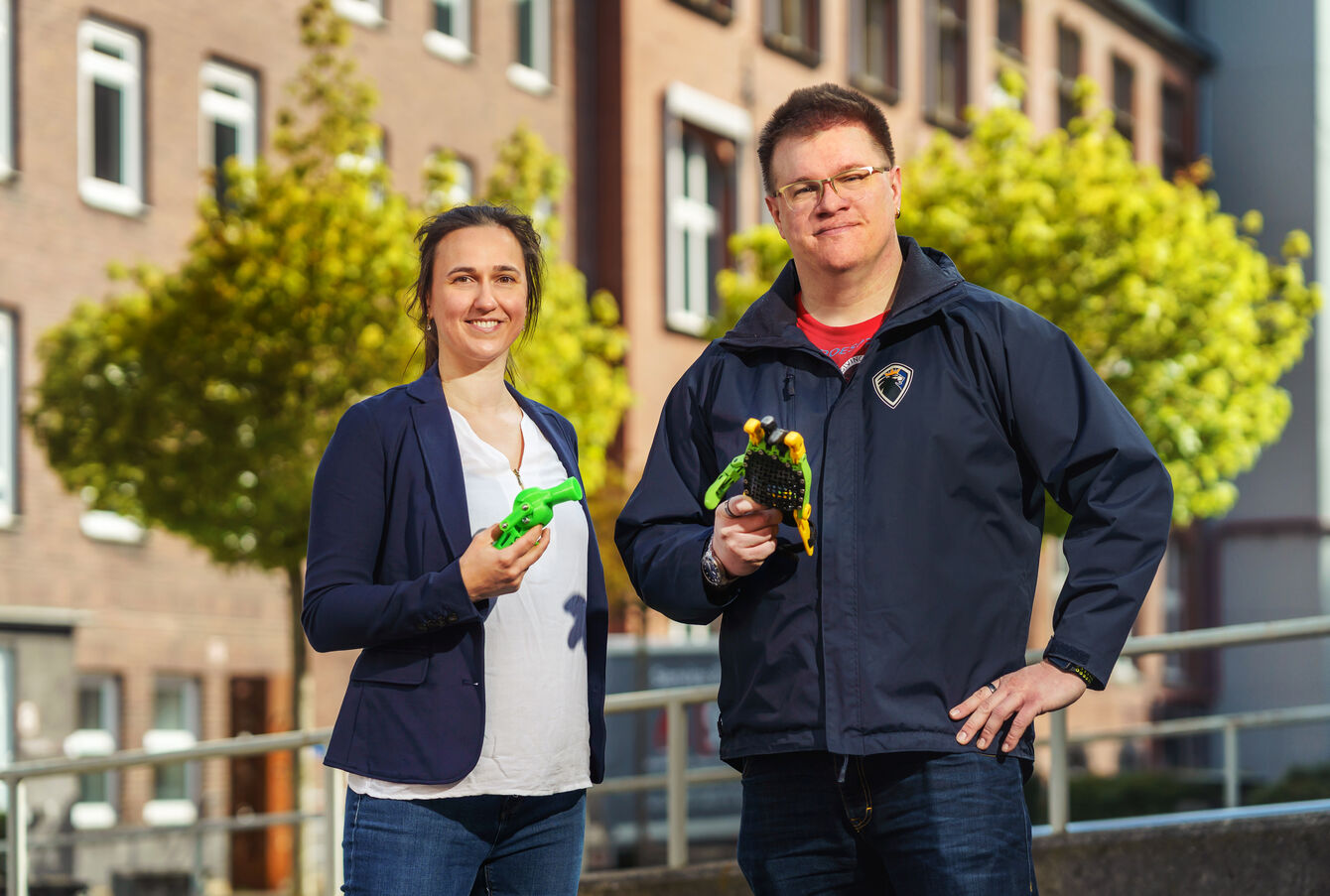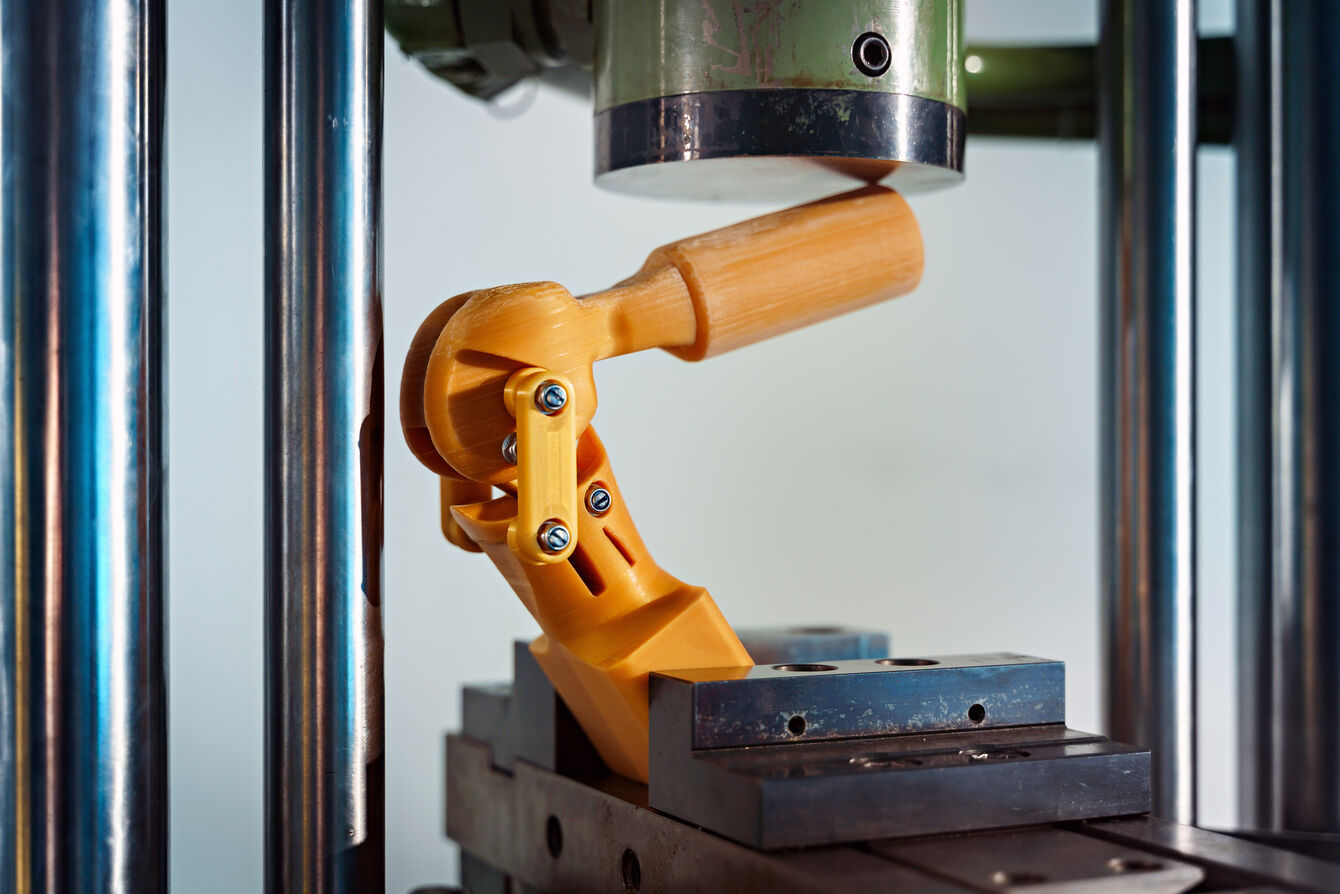Lars Thalmann is studying Mechanical Engineering at THGA. And he actively supports e-Nable, a network operating in 120 countries whose aim it is to print artificial hands and arms for children and young people with disabilities. In his Master thesis, he was able to merge his two passions: in cooperation with the organisation GiveMe5, a partner of e-Nable, he developed the 3-D printing of articifial knees for children in Colombia.
The appliance is extended by a lower leg - if the person moves their still existing upper leg, the artificial limb aligns perfectly to the ground. These artificial limbs do not have the same features as electrically controlled models which cost several thousand euros - but they are a practical and low-cost alternative to ensure that kids can play and run around.
Continuous improvement of knee joints
First studies and results of how to manufacture the 3-D printing of artificial legs do already exist. In his thesis, however, Thalmann took a closer look at thee knee joint which has to bear a lot of stress: Which forces act where? What load must the joint bear? How thick do the individual plastic parts need to be printed? This scientific approach helped him to further optimise the artificial knee joint and design it in such a way that children up to the age of ten can use the prosthesis without any difficulty. Biologically degradable plastic (PLA) is used for the manufacturing - a material that is sustainable and has passed stress tests even at temperatures of more than 40 °C. Thalmann's supervisor at THGA was Dr.-Ing. Nicole Lefort, and third mission funds were granted by the university to sponsor the project, for example, to buy additional printer material and peripherals.
Now the student is compiling his findings in instructions which will be shared with the volunteer staff of GiveMe5 to help them print the artifical joints themselves.
Contact
Prof. Dr.-Ing. Nicole Lefort
- Nicole.Lefort@thga.de
- Telephone
- +49 234 968-3457
- Office
- G7 R011



